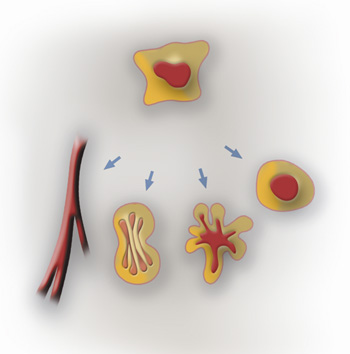
What are chemotherapy regimens or protocols?
A chemotherapy protocol or also known as a regimen is a treatment plan that usually involves more than one drug. The regimen includes:
- The name of the drugs
- The dose of each drug
- How often to take the drugs
- How the drugs are given
- How long to take each drug for
Chemotherapy is given in cycles. This is where the treatment is given for a period followed by a rest period. In the rest period no treatment is given. The rest period allows the healthy cells and the body to recover. Each period of treatment and rest is called a chemotherapy cycle.
A full course of chemotherapy often takes several months, and each dose of chemotherapy kills only a percentage of cancer cells. Chemotherapy is often given in multiple treatment cycles to destroy as many cancer cells as possible
Why is chemotherapy given in combination with other drugs?
Some chemotherapy drugs are given on their own. An example of this is Bendamustine. Patients might have a single chemotherapy drug if the aim is to control symptoms of lymphoma, rather than to treat the lymphoma itself.
Combinations of chemotherapy drugs are given to treat lymphoma. Each drug works in a slightly different way to kill the lymphoma cells. Each drug affects cancer cells at different points in the cell cycle. Using a combination of drugs increases the chance that all the cancer cells will be eliminated. Steroids are often given as a part of the chemotherapy regimen. An example is prednisolone.
Steroids can:
- Kill cancer cells and shrink tumours
- Decrease swelling
- Reduce allergic reactions
- Reduce nausea
How do chemotherapy protocols get their names?
Chemotherapy combinations are often referred to by the initials of the medicine names in the combination. An example of a combination used in lymphoma is CHOP. CHOP is a combination of four medicines. Three chemotherapy medications and one steroid medication: Cyclophosphamide, Doxorubicin (also called Hydroxydaunorubicin), Vincristine (also called Oncovin) and Prednisone (steroid medication). Steroid medicines are included in many of the lymphoma treatments as they are effective therapies for lymphoma and can quickly get symptoms under control.
Some chemotherapy regimens have names that do not use acronyms. An example is chlorambucil
For some types of lymphoma, other drugs are given either alone or with chemotherapy. This is sometimes the case with:
- Targeted drugs, such as Ibrutinib
- Antibody therapies, such as Obinutuzumab.
Some common chemotherapy regimens used in lymphoma include:
ABVD – doxorubicin (Adriamycin®), bleomycin, vinblastine and dacarbazine
CHOP – cyclophosphamide, doxorubicin (or hydroxydaunorubicin), vincristine (Oncovin®) and prednisolone
CVP – cyclophosphamide, vincristine, and prednisolone
BEACOPP – bleomycin, etoposide, doxorubicin (Adriamycin®), cyclophosphamide, vincristine (Oncovin®), procarbazine and prednisolone
How will I know if my chemotherapy is working?
There are several ways to find out if the treatment is working. These can include:
- Radiology/Imaging Studies: CT scans, MRIs, PET scans.
- Checking Symptoms: If the symptoms caused by the cancer are improving, then it is likely the chemotherapy is working.
Patients will be closely monitored while getting chemotherapy and any changes or side effects should be discussed with the medical team.
What is chemoimmunotherapy?
Chemoimmunotherapy is chemotherapy combined with immunotherapy. Chemotherapy uses different drugs to kill or slow the growth of cancer cells. Immunotherapy uses treatments to stimulate or restore the ability of the immune system to fight cancer.
A common chemoimmunotherapy regimen is CHOP combined with Rituximab (R-CHOP) for B-cell non-Hodgkin lymphomas.
Frequently asked questions
The regimen patients have depend on several factors including:
- The type of lymphoma
- Whether it is fast-growing (aggressive) or slow- growing (indolent) lymphoma
- Where in the body the lymphoma is?
- The symptoms
- Previous treatments for lymphoma
- Age, general health, and fitness.
Side effects
Treatment affects each person differently – even the same treatment can have different side effects for each patient. The doctor or chemotherapy nurse should discuss the side effects with the patient.
Can the dose be reduced due to a lot of side effects?
It is important to try to maintain the highest tolerable dose during chemotherapy treatment. Studies have shown that reducing the dose or delaying chemotherapy treatments until side effects subside may decrease the likelihood of remission and the chances for long-term survival in some types of lymphomas. It is important for someone receiving chemotherapy to understand that changing the dose or treatment cycle to reduce short-term side effects may be harmful in the long run.
However, quality of life is valuable as well, and patients need to decide whether the side effects are tolerable or not. It is important to make this decision in an informed way and understand the potential consequences of your choice.

